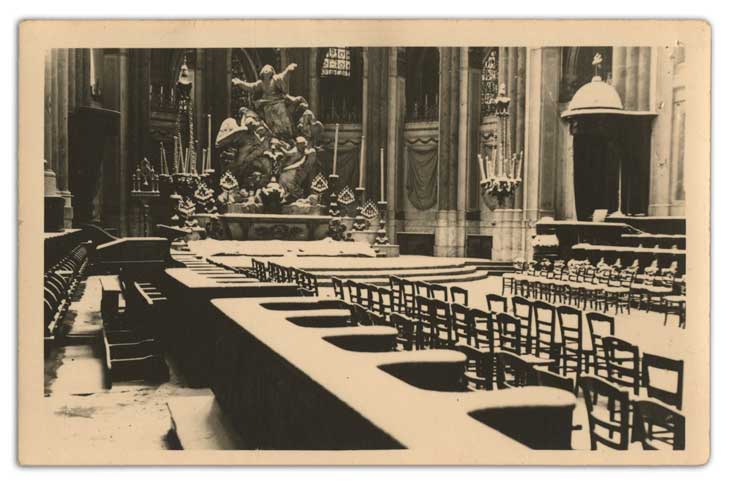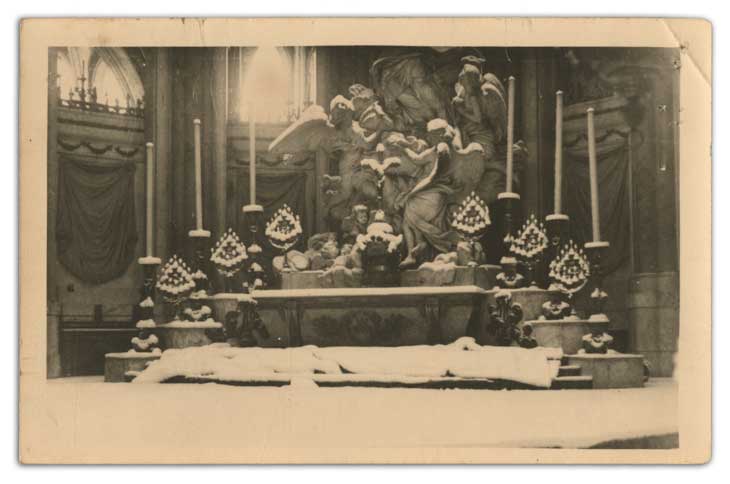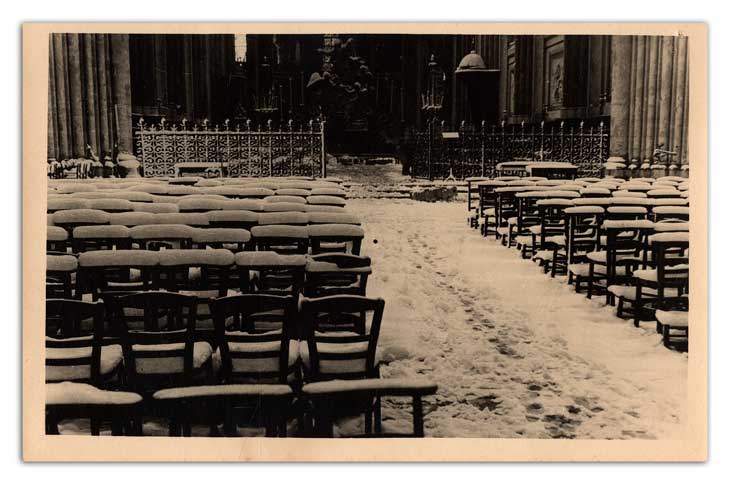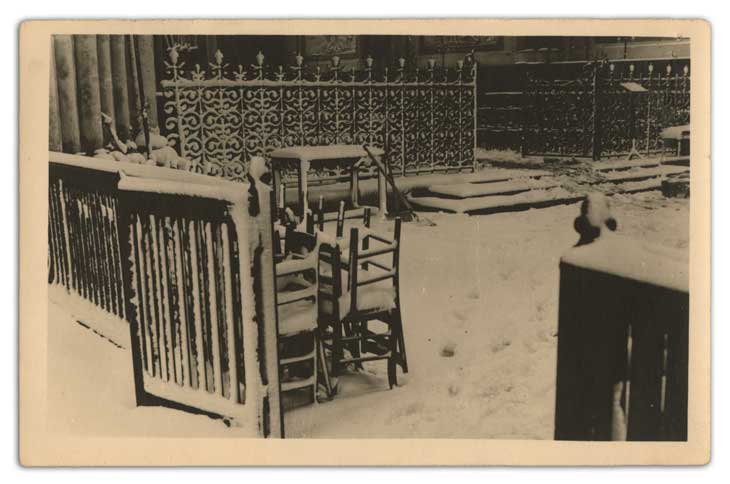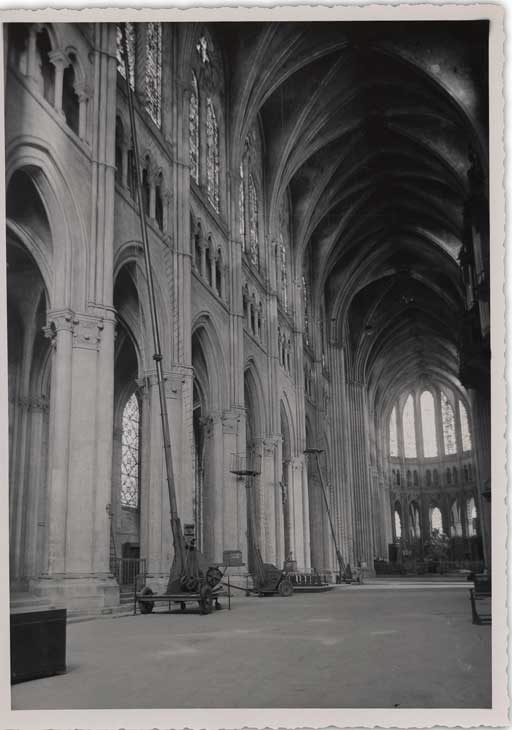Original article published on the Archives départementales d’Eure-et-Loir website,
with their kind permission.
FR AD 28 / 83 W 711 – Black and white photographs
These photographs, taken from the compensation file for war damage to the cathedral’s organs and bell motor, show an unusual aspect of the building’s interior.
The snow on the building shown here is due to the fact that the temporary fencing installed in 1939, after the stained glass windows had been removed, deteriorated over the course of six years, allowing snow to pass through during a storm.
Nevertheless, restorations were carried out up to the end of the 1950s, in particular to repair the north bell tower, which had been strafed in 1945.
To go further…
Follow this link to visit the dedicated page on the Archives départementales d’Eure-et-Loir website.
And don’t hesitate to visit the panoramic exhibition dedicated to the first hours of the Occupation in Eure-et-Loir:
- on site at the Departmental Archives (3 rue Philarète Chasles 28300 Mainvilliers) ;
- or directly on the Archives départementales website by clicking on this link:
Move around the panoramic exhibition by clicking on the image AND dragging it with your mouse (left-click and hold),
then clicking:
– the yellow arrows on the floor to move forward in the exhibition ;
– on the green dots, which will open the documents on display (also click on the documents themselves).
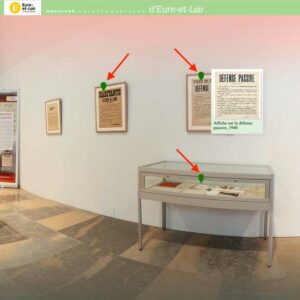
Excerpt from showcase 2, relating the context for protecting the cathedral:
“In the Eure-et-Loir region, the authorities considered the towns of Chartres and Châteaudun to be potential targets for aerial bombardment because of their size and, above all, the presence of a major military air base nearby.
(…)
As well as protecting the population, the authorities were also keen to protect the country’s cultural heritage and works of art. From August 1939, the collections of the national museums in Paris were dispersed to less exposed sites throughout the country. In Eure-et-Loir, the Château de Courtalain housed collections from the Château de la Malmaison, the Louvre’s Egyptian antiquities department, the Ecole des Beaux-Arts and private collections. In June 1940, the advance of the Germans prompted Jacques Jaujard, Director of the National Museums, to evacuate part of this repository to another château at Saint-Blancard, in the Gers. The Château de Villebon housed the collections of the city of Chartres.
Similarly, special arrangements were made for national monuments to limit the damage caused by bombing. On August 25, 1939, the Ministry of Fine Arts ordered the Prefect of Eure-et-Loir to immediately remove the stained glass windows from Chartres Cathedral. Chartrains had been practicing this operation since 1936 at Saint-André church, as part of passive defense. 22 companies, 22 scaffolding units, 6 lifting platforms, 1,100 crates, 182 drawings and plans were needed to protect the 7,700 panels (i.e. 2,800 m² of stained glass). The crates are stored in the cathedral crypt, where the Lorin company has set up a workshop to clean and restore this precious heritage. 105,000 bags of earth were also used to protect the cathedral’s portals.”
